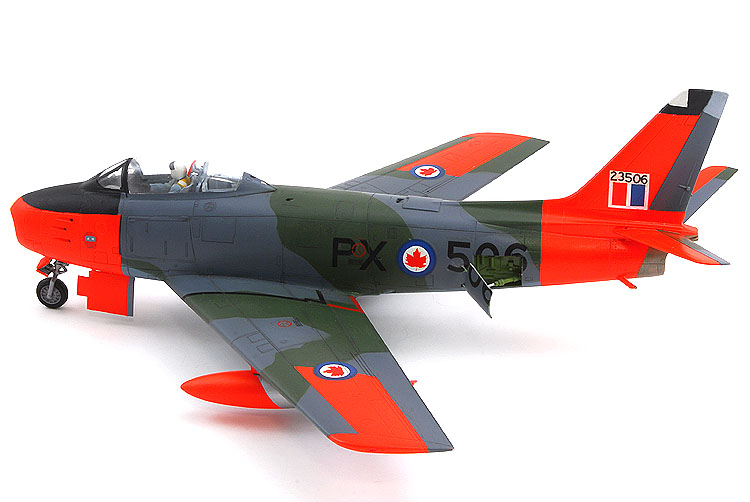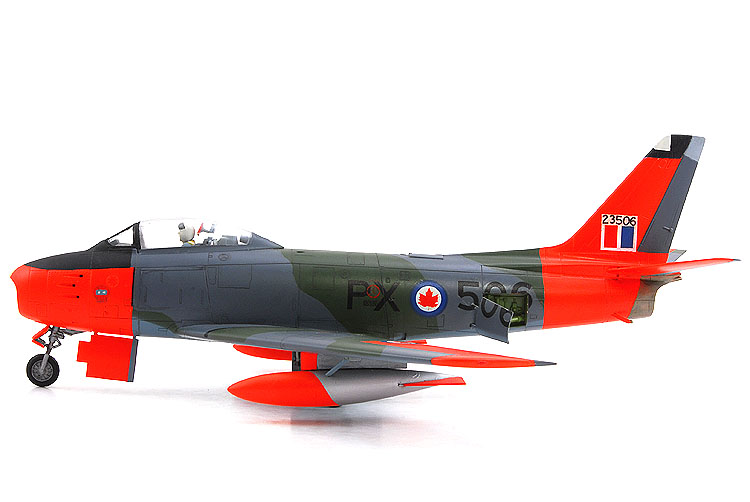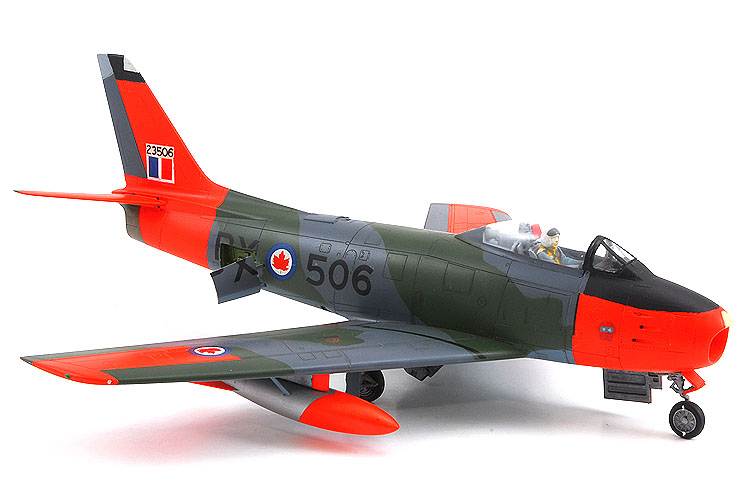

Unfortunately over the years this model has suffered its fair share of damage; broken air brakes, dropped drop tanks and a long-lost pitot tube. Still, it continues to hold up well and remains one of the oldest models I'm proud to keep showing off.
Kit:
Aftermarket:
Date:
Academy (2162)
Arrow Graphics decals
2000
As the jet age dawned, North American Aviation continued its line of successful military aircraft with their new swept wing jet fighter - the Sabre. When the Korean War heated up,
it was the Sabre that helped regain control of the skies from the much feared Mig-15s.
In Canada, Canadair secured licenced production rights from North American and soon began producing a more powerful Orenda powered variant known as the Mark 5. Later, a more
powerful Orenda engine and new wing were fitted creating the ultimate Mark 6 model.
Acaademy released its F-86F-30, which is close enough to producing a Mark 5 Sabre.
The interior of the Academy kit is sparten, yet (with the pilot figure installed and the canopy closed) all thats needed to produce an attractive and adiquate interior. This kit
allows the modeller the chance to open both gun bays to view six .50 caliber machine guns, while also allowing the modeller the choice of displaying a complete engine (on a stand)
with the aircraft. Parts fit is very good with the only problem occuring at the joint between the air intake and the intake nozzle. Don't be alarmed, this is common on all Sabre
kits, and can easily be solved with a little putty and careful sanding.
Generally Canada flew either silver or camoflaged Sabres. However, I prefer more colourful examples to model (and not wanting a Golden Hawk) I began looking for a paint scheme. I
found exactly what I was looking for in the book Tha Canadair Sabre by Larry Milberry. In the pages of this great book is a colour side profile of a Sabre Mk. 5 used by the RCAF's
CEPE (climatic) test group in the early 1960s. As a bonus, this aircraft was based out of CFB Cold Lake (in the same province of Alberta). At least two aircraft were assigned
(PX*506 and 559) wearing distinctive day-glo orange patches during their lifetimes.
First I painted my Sabre with a white enamel base colour, followed when dry, by Testor's Model Master 2 formula Day-glo orange. This is a nice paint, and the only day-glo that I've
found sprays well. Once these colours were dry and masked, the standard RCAF NATO camoflage pattern was applied using Polly-Scale acrylics. Again everything was allowed to dry
before decaling began.
Markings came from a variety of Arrow Graphics decal sheets, including a sheet of Sky Lancer aerobatic Sabres. PX*506 was chosen because of the numbers avalible.

